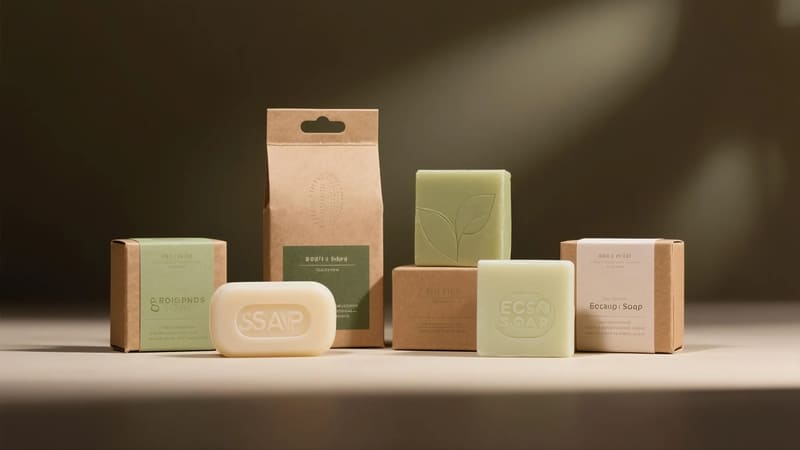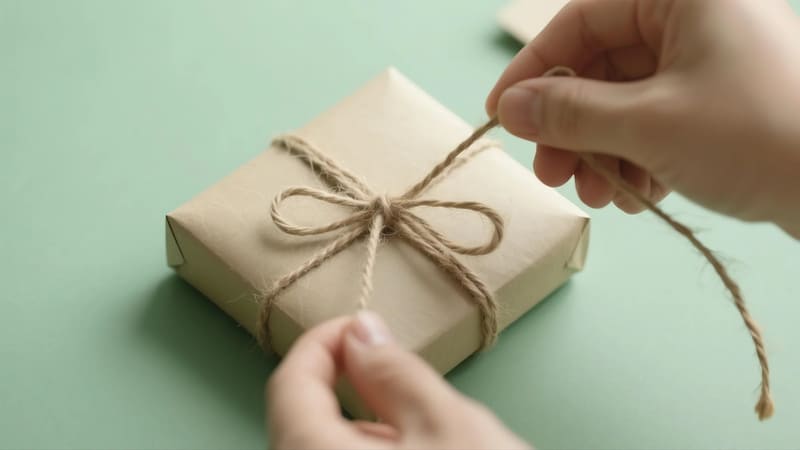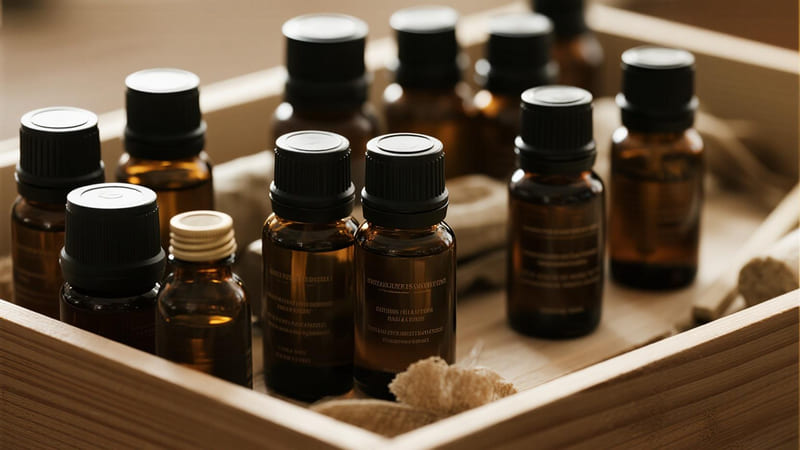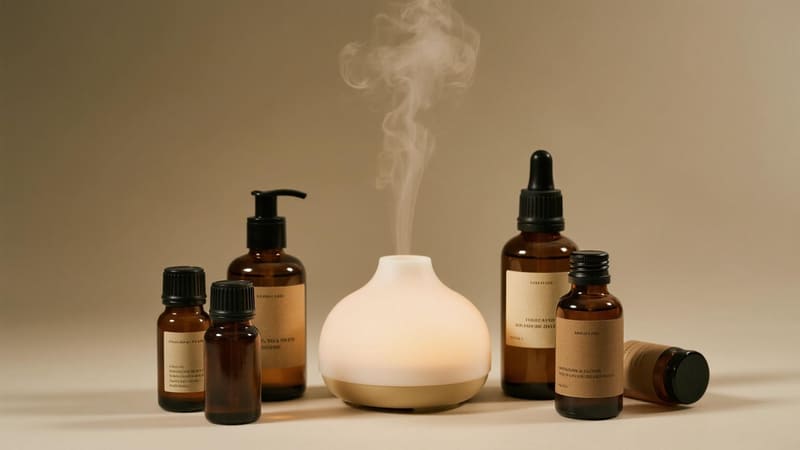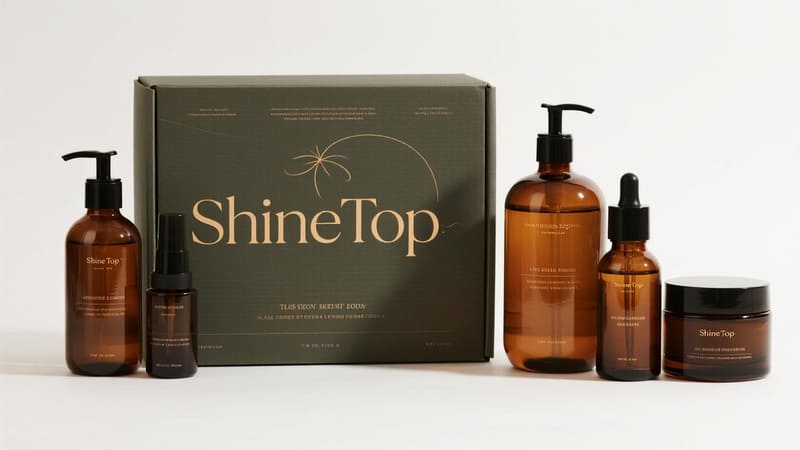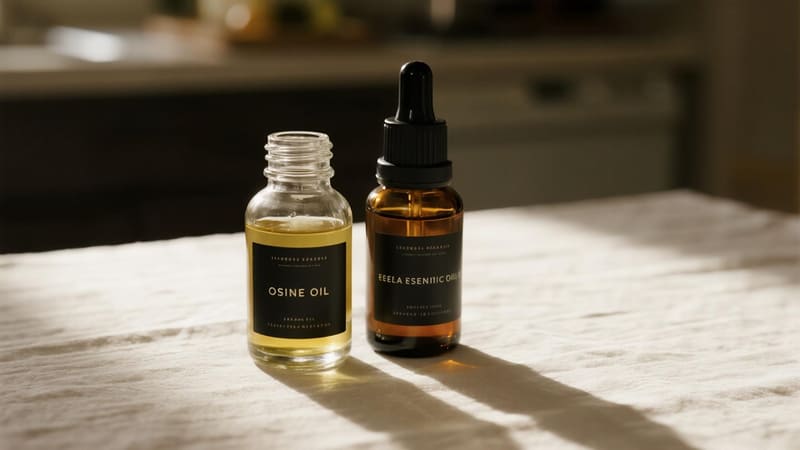The humble bar of soap, often a symbol of natural simplicity, deserves packaging that reflects its wholesome image and respects the environment. Thankfully, there are many creative and eco-friendly design options available.
Eco-friendly packaging designs for soap include minimalist paper wraps or bands (from recycled or FSC-certified paper), Kraft paper boxes, seed paper packaging, fabric wraps (muslin, linen), "naked" presentation with a simple tag, glassine bags, or custom-molded pulp containers. The focus is on biodegradable, recyclable, or reusable materials and minimal waste.
As consumers increasingly seek sustainable products, the packaging for your soap can be a powerful statement of your brand’s commitment to the planet. While ShineTop primarily focuses on cosmetic packaging, the principles of sustainable design are universal, and we often produce paper-based solutions that would be perfect for artisanal soaps. Let’s explore some inspiring eco-friendly designs.
How to Make Eco-Friendly Soap Packaging?
Creating eco-friendly soap packaging is about making conscious choices in materials, design, and printing to minimize environmental impact while still protecting and presenting your soap attractively.
To make eco-friendly soap packaging, prioritize biodegradable or recyclable materials like recycled paper/cardstock, Kraft paper, glassine, or fabric. Design for minimalism to reduce material usage. Use soy/vegetable-based inks for printing. Consider "naked" options with just a tag, or innovative ideas like plantable seed paper.
Making your soap packaging eco-friendly involves several key considerations:
-
Choose Sustainable Materials:
- Paper-Based:
- Recycled Paper/Cardstock: High post-consumer waste (PCW) content is ideal.
- FSC-Certified Paper/Cardstock: Ensures responsible forestry.
- Kraft Paper: Unbleached, often recycled, gives a natural, rustic look.
- Seed Paper: Biodegradable paper embedded with seeds that can be planted.
- Glassine: A smooth, translucent paper that is biodegradable and recyclable. Good for inner wraps or small bags.
- Fabric:
- Muslin, Cotton, Linen, Hemp: Natural, reusable, and biodegradable. Great for drawstring bags or wraps.
- Other Naturals: Thin wood veneer (sustainably sourced), pressed leaves (for a very artisanal look, ensure durability).
- Paper-Based:
-
Minimalist Design Approach (Reduce):
- Belly Bands/Sleeves: A simple band of paper around the soap instead of a full box.
- "Naked" Soaps: Selling soaps with no packaging other than a small recyclable paper tag tied with natural twine (jute, hemp).
- Avoid excessive layers or unnecessary inserts.
-
Design for Recyclability/Compostability:
- Use mono-materials where possible.
- If using adhesives, choose water-based or eco-friendly options.
- Ensure any coatings or laminates (if absolutely necessary) are recyclable or compostable.
-
Eco-Friendly Printing:
- Use soy-based or vegetable-based inks, which are less harmful than traditional petroleum-based inks.
- Consider minimal printing or techniques like embossing/debossing for a tactile effect without ink.
- Water-based varnishes instead of plastic laminates.
-
Reusable Elements:
- Fabric bags can be reused by the customer.
- A beautiful box might be repurposed.
-
Local Sourcing (If Possible):
- Sourcing materials locally can reduce transportation emissions.
Anna, a cosmetics client of ShineTop in Thailand, also makes artisanal soaps. For these, she uses simple, unbleached Kraft paper belly bands printed with a single color of soy-based ink, tied with a piece of locally sourced hemp twine. This perfectly reflects her brand’s natural, minimalist ethos.
What is the Best Way to Package Soap?
The "best" way to package soap balances product protection (especially for handcrafted soaps that can be softer or have delicate toppings), branding, consumer appeal, and increasingly, sustainability.
The best way to package soap often involves a breathable yet protective material. For many artisanal soaps, a simple paper wrap or a paperboard box (allowing some air circulation if not fully sealed) is ideal. This protects the soap while allowing it to continue curing (if applicable) and preventing "sweating." The packaging should also clearly display brand and ingredient information.

"Best" is subjective and depends on the type of soap and brand goals, but some common effective methods stand out.
Popular & Effective Soap Packaging Methods:
-
Paper Wrap / Cigar Band / Belly Band:
- Description: A strip of paper wrapped around the middle of the soap bar.
- Pros: Minimal material usage, allows soap to be seen and smelled, cost-effective, good for branding.
- Cons: Offers less physical protection than a full box.
- Best For: Hard, cured bars of soap; brands wanting a rustic or minimalist look.
-
Full Paper Wrap:
- Description: The soap is completely wrapped in paper, like a gift.
- Pros: Good protection, ample space for branding and information, can look very artisanal.
- Cons: Soap is not visible.
-
Paperboard Box (Folding Carton):
- Description: A box made from paperboard, often with a die-cut window to show the soap.
- Pros: Excellent protection, professional appearance, lots of branding space, stackable for retail.
- Cons: Uses more material than a wrap; window material (if plastic) needs to be considered for recyclability.
- Best For: Most types of soap, especially if shipping or for a more premium retail presentation. ShineTop produces many such custom boxes.
-
Fabric Bag (Drawstring Pouch):
- Description: Soap placed in a muslin, cotton, linen, or organza bag.
- Pros: Reusable by the customer, unique tactile appeal, good for gift sets.
- Cons: Offers less protection against dents, soap scent may permeate.
-
"Naked" with a Tag:
- Description: Soap sold with no wrapping, just a small paper tag tied on with twine.
- Pros: Ultimate minimalist and eco-friendly approach, allows full sensory experience for the customer.
- Cons: No protection, soap is exposed, only suitable for very hard, durable bars and certain retail environments (e.g., farmers’ markets).
-
Shrink Wrap (Plastic Film – Less Eco-Friendly but Common):
- Description: Soap is sealed in a thin plastic film that shrinks to fit.
- Pros: Protects from moisture, dust, and handling; allows soap to be seen.
- Cons: Not breathable (can cause "sweating" in some soaps, especially glycerin-based), generates plastic waste unless a compostable/biodegradable film is used (and proper disposal occurs).
- Note: If using, opt for PVC-free and potentially bio-based or compostable films where available and appropriate.
The "best" way often involves considering the type of soap. Cold-process soaps often benefit from breathable packaging as they continue to cure. Glycerin (melt-and-pour) soaps are prone to "sweating" (attracting atmospheric moisture) and often do better with less breathable or fully sealed packaging like shrink wrap or a well-sealed box if they are to sit on shelves for a long time.
What are the Eco-Friendly Packaging Ideas?
Moving beyond just soap, the demand for innovative eco-friendly packaging ideas spans all industries. These concepts often focus on circularity, biodegradability, and minimizing virgin resource use.
Eco-friendly packaging ideas include refillable systems, plantable seed paper, mushroom packaging (mycelium), seaweed-based materials, minimalist designs using significantly less material, packaging made from agricultural waste, edible packaging (for specific food applications), and multi-functional packaging designed for a second life after its initial use.
Innovation in sustainable packaging is constantly evolving, offering exciting new possibilities.
Inspiring Eco-Friendly Packaging Concepts:
- Refillable Systems: Consumers buy a durable primary container and then purchase refills in minimal packaging. (e.g., for liquid soaps, lotions, cleaning products).
- Solid Product Formulations: Eliminating water from products like shampoo, conditioner, and cleansers to create bars that require minimal or no plastic packaging.
- Plantable Seed Paper: Packaging that can be planted to grow flowers, herbs, or vegetables.
- Mushroom® Packaging (Mycelium): Custom-molded protective packaging made from agricultural byproducts and mushroom roots. Home compostable. Great for inserts.
- Seaweed-Based Packaging (Alginate): Edible or biodegradable films, pouches, or even "water bubbles" being developed from seaweed.
- Agricultural Waste Materials: Using byproducts like corn husks, sugarcane bagasse, or straw to create molded fiber packaging.
- Reusable Fabric Wraps (Furoshiki Style): Using decorative fabric squares to wrap gifts or products, promoting reuse.
- Glassine or Waxed Paper Wraps: Biodegradable and often compostable alternatives to plastic films for certain food or dry goods.
- Bamboo & Cork: Fast-growing, renewable materials for containers, lids, or components.
- "Naked" or Minimalist Approach: Questioning if packaging is needed at all, or using the absolute bare minimum (e.g., a simple paper band or tag).
- Designing for Disassembly & Mono-Material Use: Making it easy for consumers to separate components for proper recycling.
For soap, many of these ideas are highly applicable, especially minimalist paper wraps, seed paper tags, fabric bags, or even custom-molded pulp trays for gift sets.
What is the Best Eco-Friendly Packaging?
The "best" eco-friendly packaging is a holistic concept, not a single material or design. It’s the solution that minimizes overall environmental impact across its entire lifecycle while still meeting the product’s functional needs.
The "best" eco-friendly packaging generally follows the waste hierarchy: 1. Reduce (use less material), 2. Reuse/Refill (design for multiple uses), 3. Recycle (use high recycled content and ensure easy recyclability). Materials like responsibly sourced paper/cardboard, glass, aluminum, and certified compostable options (where appropriate infrastructure exists) are strong contenders when used thoughtfully within this framework.
"Best" means making the most impactful positive choices available for your specific product and brand.
Key Strategies for "Best" Eco-Friendly Packaging:
-
Prioritize Prevention & Reduction:
- The most sustainable package is often the one that uses the least material or isn’t needed at all. Solid products, concentrates, and minimalist designs are key.
-
Embrace Reuse & Refill Models:
- This significantly reduces single-use packaging waste and is a powerful strategy for building customer loyalty.
-
Maximize Recycled Content & Design for High Recyclability:
- Materials: Glass, aluminum, PCR plastics (PET, HDPE, PP), and FSC-certified/recycled paperboard are strong choices.
- Design: Mono-materials, easy disassembly, clear recycling labels (e.g., How2Recycle).
-
Consider the Full Lifecycle:
- Raw material extraction, manufacturing energy, transportation footprint, and end-of-life options all contribute to the overall impact.
- For example, glass is heavy to transport but highly recyclable. Lightweight plastic has lower transport emissions but is often derived from fossil fuels (unless PCR or bio-based).
-
Local & Responsible Sourcing:
- Sourcing materials locally can reduce transport emissions.
- Ensure materials like paper come from responsibly managed sources (FSC).
-
Certified Compostability (for Appropriate Applications):
- If recycling is not feasible for a particular packaging type or if product residue is an issue, certified home or industrial compostable packaging can be a good alternative, provided consumers have access to and use appropriate composting facilities.
For soap packaging, this often translates to:
- Best Overall: Minimalist recycled/FSC paper wraps or boxes, or "naked" with a seed paper tag.
- For Gifting/Luxury: Beautifully designed rigid boxes made from recycled board, perhaps with molded pulp inserts, designed to be reusable by the consumer.
- For Liquid Soap: Refillable glass or durable PCR plastic dispensers with refills sold in lightweight, recyclable pouches.
At ShineTop, we work with brands to explore these options, helping them find the sweet spot between sustainability, brand aesthetics, product protection, and cost.
Conclusion
Eco-friendly packaging for soap offers a wonderful opportunity to align your product’s presentation with its natural, wholesome appeal. By prioritizing materials like recycled paper, Kraft paper, seed paper, or fabric, and embracing minimalist designs, brands can create beautiful, sustainable packaging that resonates with conscious consumers and minimizes environmental impact. The "best" approach often involves reducing material use, ensuring recyclability or biodegradability, and getting creative with presentation.

